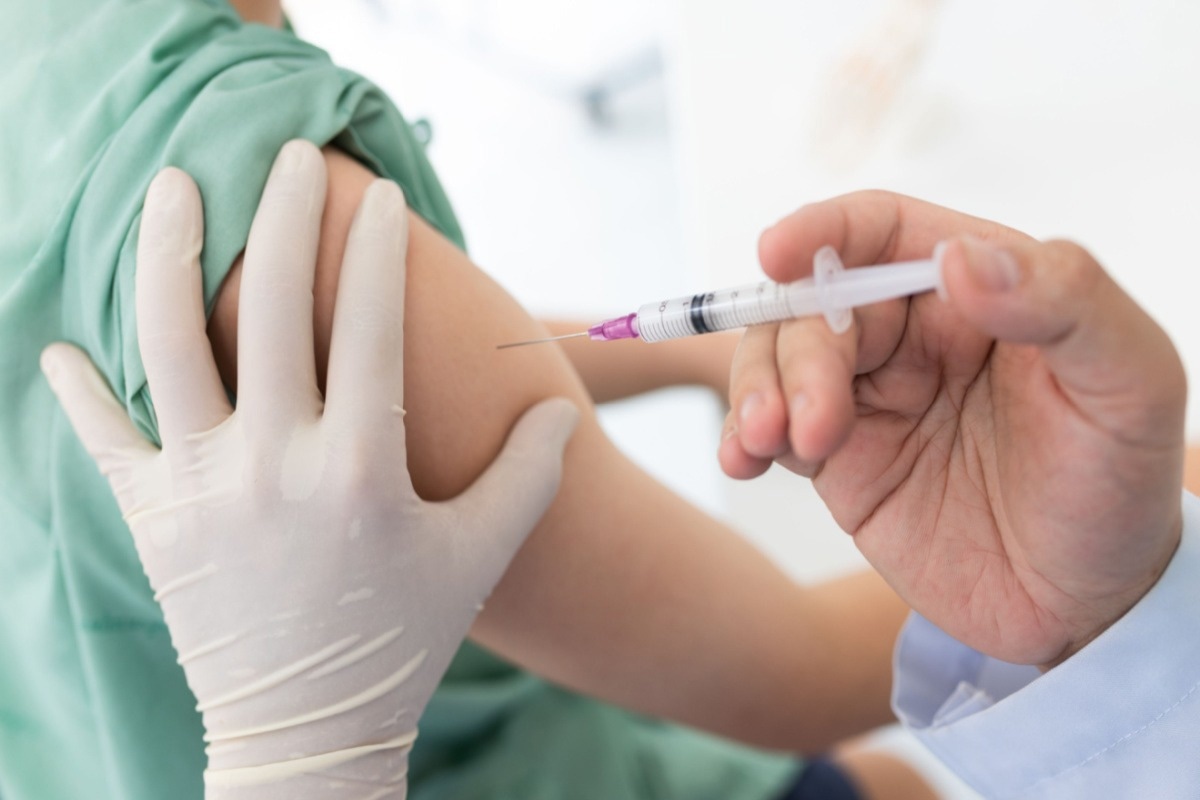Additionally, they quantified the impact of vaccination and previous infection on the speed of antigenic shifts between SARS-CoV-2 variants.
 Study: Vaccination shapes evolutionary trajectories of SARS-CoV-2. Image Credit: Tong_stocker/Shutterstock
Study: Vaccination shapes evolutionary trajectories of SARS-CoV-2. Image Credit: Tong_stocker/Shutterstock

 This news article was a review of a preliminary scientific report that had not undergone peer-review at the time of publication. Since its initial publication, the scientific report has now been peer reviewed and accepted for publication in a Scientific Journal. Links to the preliminary and peer-reviewed reports are available in the Sources section at the bottom of this article. View Sources
This news article was a review of a preliminary scientific report that had not undergone peer-review at the time of publication. Since its initial publication, the scientific report has now been peer reviewed and accepted for publication in a Scientific Journal. Links to the preliminary and peer-reviewed reports are available in the Sources section at the bottom of this article. View Sources
The study model accounted for SARS-CoV-2’s intrinsic and antigenic fitness components and also combined data from time-resolved sequencing, epidemiological records, and cross-neutralization assays to infer model parameters.
Background
The rapid turnover of SARS-CoV-2 genetic clades, with new variants showing increased fitness and transmissibility, attenuated the cross-immunity induced by previous infections and vaccinations. Here it is also noteworthy that because it depends on population immunity, the evolutionary impact of antigenic changes between SARS-CoV-2 variants is time-dependent. Therefore, in the past, widespread vaccinations influenced the turnover of circulating clades of influenza virus.
In 2021, the global count of coronavirus disease 2019 (COVID-19) vaccinations touched the ~4.5 billion mark. Yet, studies barely quantified the impact of these large-scale vaccination campaigns on the global epidemiological and evolutionary dynamics of SARS-CoV-2.
About the study
In the present study, researchers obtained more than five million quality-controlled SARS-CoV-2 sequences from the global initiative on sharing all influenza data (GISAID) databases to track all the circulating clades of SARS-CoV-2. They used a set of amino acid (AA) changes to assign genetic clades to the obtained sequencing data. Subsequently, they inferred time-dependent clade frequencies from strain counts for ∼30 days.
In the past two years, three SARS-CoV-2 variants of concern (VOCs) and their associated clades attained global prevalence: i) Alpha (α) between March and June 2021, ii) Delta (δ) between June and December 2021, and iii) Omicron (o) in 2022. The researchers recorded the frequency trajectories of VOC shifts for multiple countries meeting the uniform criteria and three US states, namely, New York, Texas, and California. They ensured all data was accurate and time-resolved. One denoted the clades circulating before α, including the wild type (wt) and those with early 614G mutation in the SARS-CoV-2 spike (S) protein.
The study analysis included 11 regions for the 1 − α shift, 16 for the α − δ shift, and 14 for the δ − o shift. Lastly, the team analyzed regions for both α−δ and δ −o shifts to track the long-term evolutionary trajectories of SARS-CoV-2.
Study findings
In 2021, while primary vaccination impacted the speed of SARS-CoV-2 clade shifts globally, booster vaccination induced higher cross-protection but weaker selection for antigenic escape. The study findings, thus, highlight the significance of incorporating evolutionary feedback into vaccine design.
Further, the study analysis revealed that antigenic selection increased in strength and broadened its target. For instance, infection-induced antigenic selection increased in strength from 0.01 to 0.03 in the α – δ and the δ – o shifts. Both vaccination and previous infections induced substantial antigenic selection on circulating SARS-CoV-2 variants and modulated the pace of succeeding clade shifts.
However, antigenic selection did not either cause or prevent these shifts because inherent functional changes generated enough fitness advantage for the invading variants regardless of population immunity.
In other words, SARS-CoV-2 generated multiple antigenic components (distinct variants) initially, i.e., during its zoonotic spillover to humans. If SARS-CoV-2 transits to an endemic state, population immunity to its circulating variants shall fuel its antigenic evolution, but this transition will decelerate its antigenic evolution. Also, most of the intrinsic changes in SARS-CoV-2 antigenic drifts will become compensatory, as observed during the SARS-CoV-2 evolutionary path leading to the emergence of Omicron. Intriguingly, in Omicron, a stronger binding affinity to human cell receptors compensates for attenuated fusogenicity.
Conclusions
The study-used data-driven fitness model facilitated the tracking of the ongoing, multi-faceted antigenic evolution of SARS-CoV-2. It could also predict how SARS-CoV-2 will evolve in the future to inform preemptive vaccination strategies. More importantly, the study analysis showed that the relationship between vaccination coverage and speed of evolution was complex due to correlations between cross-immunity channels. Consequently, fewer vaccinations lead to more SARS-CoV-2 infections, building up cross-immunity in other immunity channels.
It is also noteworthy that infection-induced antigenic selection always contains components of opposite types. Therefore, while primary infections by the ancestral SARS-CoV-2 clade generated positive selection, infection by the so-created novel clades generated negative selection. This cycle prolonged the coexistence of both ancestral and invading clades. SARS-CoV-2 antigenic selection produced complex but measurable time-dependent patterns.

 This news article was a review of a preliminary scientific report that had not undergone peer-review at the time of publication. Since its initial publication, the scientific report has now been peer reviewed and accepted for publication in a Scientific Journal. Links to the preliminary and peer-reviewed reports are available in the Sources section at the bottom of this article. View Sources
This news article was a review of a preliminary scientific report that had not undergone peer-review at the time of publication. Since its initial publication, the scientific report has now been peer reviewed and accepted for publication in a Scientific Journal. Links to the preliminary and peer-reviewed reports are available in the Sources section at the bottom of this article. View Sources